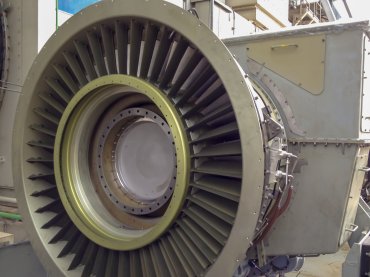Demand for engine oil used in natural gas engines is projected to grow over the next few years as governments push for cleaner fuel alternatives, according to a market report by consultancy firm Kline & Co.
Almost 30 percent of global natural gas consumption goes toward power generation applications, which includes backup power generation, captive power generation and grid power generation. Natural gas is also used to run mechanical drives, such as compressors and pumps.
“Natural gas engine oil demand is likely to grow by a 3 to 4 percent compound annual rate over the next five years,” Hareesh Nalam, senior consultant in the energy practice at Parsippany, New Jersey-based Kline, said during an online webinar on June 12. Global demand for that type of engine oil stood at a little less than 500,000 metric tons in 2018, with the United States accounting for over half of that. Europe, led by Germany, Russia and the United Kingdom, makes up almost one-fourth of demand, followed by the Asia-Pacific region and South America.
Power generation can use gas engines or gas turbines and gas-powered mechanical drives primarily use engines. These engines are classified either as two-stroke lean-burn, four-stroke lean-burn or four-stroke rich-burn, and are employed with capacities ranging from 10 kilowatts to over 10 megawatts. A megawatt is equivalent to one million watts.
Power generation will be the major demand driver for natural gas engine oils in the future, due to the need for cleaner fuel, though the use of natural gas-powered engines as mechanical drive is a popular application in big markets like the U.S., Canada, the U.K. and Russia.
One of the biggest drivers for new gas engine installations is a push from governments across the world encouraging the adoption of natural gas as an important energy source. Distributed power generation, favorable policies and increased use of gas-based power generation will all drive growth. Kline projects installed capacity growth for stationary power generation gas engines to increase by a 10.5 percent compound annual rate through 2022.
The U.S. and Germany lead all other countries since 2014 in installed capacity growth of stationary power generation gas engines, with over 7,000 MW and just under 6,000 MW, respectively. China ranks third at approximately 4,000 MW. Nalam noted that permits for grid connection, government policies and feed-in tariffs are some of the major factors that affect new installations of gas-powered engines.
Although Malaysia, Mexico and Argentina each has a very small installed base, they had the highest rates of increase in installed gas power generation capacity from 2014 to 2018 among the countries included in the study, each with just under a 40 percent compound annual growth rate.
The natural gas engine oil market is primarily served by leading multinational lubricants suppliers. ExxonMobil, Shell and Chevron make up almost 70 percent of the market, with notable contributions from Phillips 66 and Citgo. Popular brands include Mobil Pegasus, Shell Mysella, Chevron HDAX, Phillips 66 El Mar and Citgo Pacemaker.
Most oils for natural gas engines are formulated with Group II base oils due to its better antioxidation properties and competitive pricing compared to Group I base oils, though the Asia-Pacific market uses mostly Group I base oils.
Natural gas engines require specially formulated oils that differ from the formulations of diesel and gasoline engine oil in terms of increased viscosity of oil in absence of fuel dilution, higher temperature of combustion and higher deposits, Nalam explained, adding that there are several other factors as well.
Low-ash natural gas engine oil took the highest demand share, around 70 percent, as they’re preferred for engines that run on natural gas with a high percentage of methane and have low levels of impurities. OEMs are increasingly recommending low-ash NGEOs for a variety of applications, said Nalam, as they are more efficient and result in less deposits.
In terms of viscosity, monogrades, mainly SAE 40 and 30, account for close to all of demand, due to OEM recommendations.
Natural gas itself has climbed in both production and consumption rates in the past decade. Nalam said a greater focus by governments on initiatives to reduce greenhouse gas emissions and promote the use of clean fuel is the main driving growth factor.
“Even though the bulk of natural gas reserves are available to a few countries, there is an increase in consumption in natural gas across the world,” said Nalam. This is mainly possible by gas transportation through pipelines and LNG shipments.
Almost half of all natural gas consumption comes from North America and the Asia-Pacific region.
